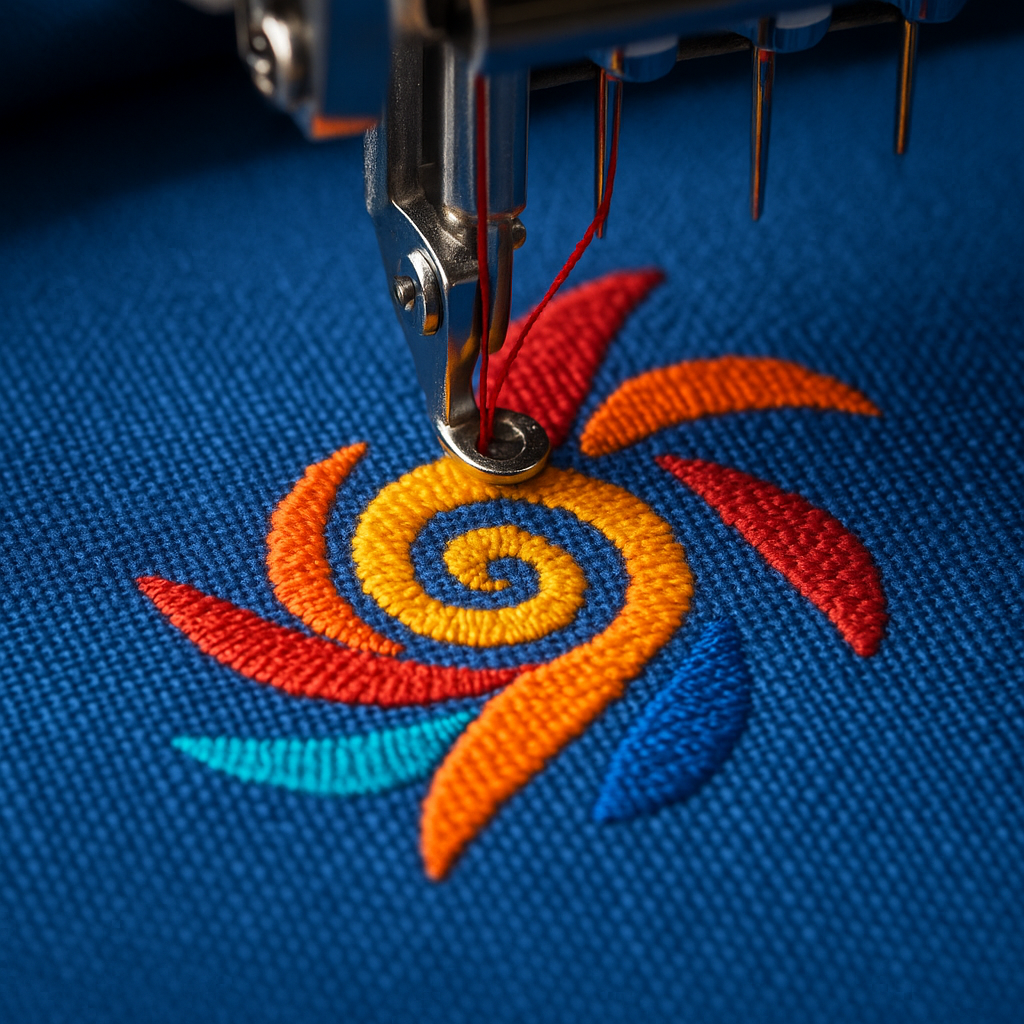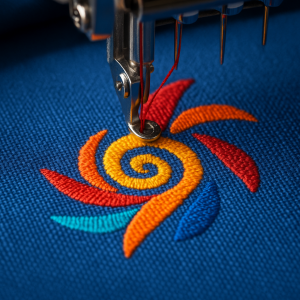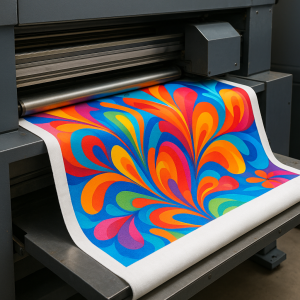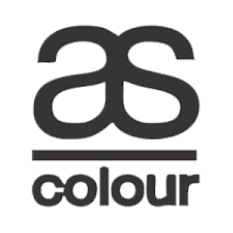When it comes to branding uniforms, the decision between embroidery and printing can significantly impact appearance, durability, and professionalism. Both methods have distinct advantages, and the best choice depends on factors like fabric type, logo complexity, budget, and intended use.
What Is Embroidery?
Embroidery is the art of stitching a design onto fabric using specialised thread and needles, either by hand or machine. It creates a raised, textured finish that adds a premium and professional look to uniforms. This method is highly durable, making it ideal for workwear, corporate attire, and garments that undergo frequent washing.
What Is Printing?
Printing involves transferring ink directly onto fabric using techniques like screen printing, digital printing, or heat transfer. Unlike embroidery, printing lays flat on the material and allows for intricate, full-colour designs. It’s a versatile option for lightweight fabrics, promotional uniforms, and designs requiring gradients or photographic detail. However, prints may fade or crack over time with heavy use.
This guide breaks down the key differences, pros, and cons of each technique, helping you make an informed decision for your business uniforms.
1. Understanding Embroidery and Printing
Embroidery involves stitching a logo or design directly onto fabric using specialised machines. It creates a textured, high-end finish that’s durable and long-lasting.
Best for:
- Corporate uniforms (polos, blazers, dress shirts)
- Heavy-duty workwear (high-visibility gear, chef coats)
- Premium branding where a luxury feel is desired
Printing (Screen Printing, Digital Printing, Heat Transfer): Printing applies ink directly onto the fabric. Common methods include:
- Screen printing: Ideal for large batches with simple designs.
- Digital printing: Best for detailed, multi-coloured logos.
- Heat transfer: Suitable for small orders or intricate designs.
Best for:
- T-shirts, hoodies, and lightweight fabrics
- Full-colour or gradient designs
- Short-term promotional uniforms
2. Key Factors to Consider
A. Durability and Longevity
- Embroidery lasts longer, resisting fading and wear even after repeated washing. Industrial embroidery threads are designed to withstand harsh conditions.
- Printing can crack or peel over time, especially with frequent washing or exposure to heat. However, high-quality prints (like plastisol) can be durable if cared for properly.
Did you know? 79% of consumers associate embroidered apparel with professionalism and trustworthiness (Home Business Magazine)
B. Fabric Compatibility
- Embroidery works best on thick, stable fabrics like cotton, polyester, or twill. It can distort lightweight materials like silk.
- Printing is more versatile, adhering well to almost any fabric, including stretchy or thin materials.
C. Logo Complexity
- Embroidery excels with simple, bold designs. Fine details or small text may become unclear.
- Printing handles intricate artwork, gradients, and photorealistic images better.
D. Cost Considerations
- Embroidery has higher upfront costs due to setup fees but becomes cost-effective for bulk orders.
- Printing is cheaper for small runs but may require reprints over time.
Tip: For businesses needing long-term uniforms, embroidery often offers better value. For one-off events, printing may be more economical.
3. Professional Appearance and Brand Perception
A well-executed logo enhances brand credibility. Here’s how each method influences perception:
- Embroidery conveys professionalism and permanence, making it a favourite for corporate uniforms, hospitality, and healthcare.
- Printing offers a modern, vibrant look, ideal for casual workwear, sports teams, and promotional gear.
4. Maintenance and Care
- Embroidery holds up well in industrial washing and drying. No special care is needed.
- Printing requires gentler washing (inside out, cold water) to prevent fading. Heat transfers are particularly sensitive to high temperatures.
5. Environmental Impact
- Embroidery uses thread (usually polyester or rayon), which has a lower environmental footprint than plastic-based inks.
- Printing inks (especially plastisol) contain PVC, which isn’t biodegradable. Water-based inks are a greener alternative but less durable.
Embroidery vs. Printing: Which Should You Choose?
Factor | Choose Embroidery | Choose Printing |
Best For | Corporate uniforms, formal wear, workwear | Casual wear, promotional gear, event uniforms |
Durability | Long-lasting, withstands frequent washing | May fade or crack over time (depends on print quality) |
Fabric Compatibility | Thick, structured fabrics (e.g., twill, polyester, denim) | Lightweight/stretchy fabrics (e.g., cotton tees, fleece) |
Design Complexity | Simple, bold logos (small text/details may blur) | Detailed, multi-coloured, or gradient designs |
Cost | Higher upfront cost (cost-effective for bulk orders) | Lower initial cost (but may require reprints) |
Appearance | Professional, textured, high-end | Smooth, vibrant, modern |
Maintenance | Holds up in industrial washing; no special care needed | Requires gentle washing (cold water, inside out) |
Long-Term Use | Ideal for permanent branding (e.g., company uniforms) | Better for short-term/promotional use |
Comparison of Logo Longevity
| Factor | Embroidered Logos | Screen-Printed Logos |
| Wash Resistance | 50+ washes 1 | Degrades after 20–30 washes 11 |
| Fabric Damage | Minimal (stitches integrate) | High risk of peeling/cracking 10 |
| Environmental Resilience | Resists UV, chemicals, friction 37 | Vulnerable to fading/wear 11 |
| Cost Over Time | Lower (durability reduces replacements) 1 | Higher (frequent reprints needed) 10 |
Quick Decision Guide:
- Need a polished, durable logo? → Embroidery
- Want vibrant colours or intricate artwork? → Printing
This table simplifies the choice—match your priorities (budget, fabric, design, and usage) to the best method. For expert advice, check VMA Uniforms.
Conclusion
There’s no one-size-fits-all answer—your choice depends on fabric, design, budget, and usage.
- Embroidery = Premium, long-lasting, professional.
- Printing = Vibrant, cost-effective, versatile.
For businesses investing in long-term branding, embroidery is often the superior choice. For temporary or high-detail designs, printing delivers better results.
Need help deciding?
Consult a trusted uniform supplier like VMA Uniforms to find the best solution for your team.
FAQs
A: No, lightweight or stretchy fabrics (like silk or spandex) may pucker. Thick, woven fabrics work best.
A: Yes, especially with frequent washing. High-quality prints last longer but won’t match embroidery’s lifespan.
A: Embroidery has higher setup costs, but printing costs add up for large orders due to reprints.
A: Yes! Some uniforms use embroidery for logos and printing for large graphics—best of both worlds.
By weighing these factors, you can select the best method for your uniforms, ensuring a sharp, professional look that lasts.











